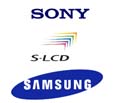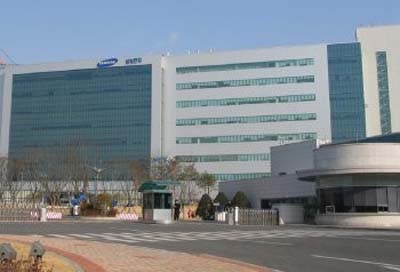KOREA/JAPAN: Samsung and Sony to pull cash out of LCD joint venture
Each partner will reduce its investment in S-LCD by around £170m; analysts suggest commitment is weakening, and two companies may be seeking joint ventures elsewhere


S-LCD (above), the flat-panel display joint venture between Samsung and Sony, is set to reduce its capital by KRW600bn (around £335m).
Both companies are playing down the move, but it's being suggested the move may jeopardise plans to produce 11th-generation glass for LCD TVs, and that it could see the partners seeking alliances elsewhere.
Each company will take KRW300bn (just under £168m) out of the venture, which was founded in 2004 and produces LCD TV panels at Samsung's massive Chungcheongnam-do plant in Korea.
Sony says that 'The main purpose of this capital reduction is to return the funds generated by S-LCD's operation to the parent companies.'
And while Samsung says that 'we haven't yet decided where the proceeds will be spent', the company announced on Friday a planned investment of KRW541.1bn (just over £300m) in a joint venture to develop it's 7.5th-generation LCD plant in China.
Its plans, which involve linking up with the local government in Suzhou, China, and local manufacturer RCL, will eventually create a plant in that area at a total cost of KRW2.6tn (£1.5bn), and in which Samsung will hold a 50% stake.
Although the Korean press reported last Autumn that, following talks between Samsung chairman Lee Kun-hee and Sony boss Sir Howard Stringer, there was a plan to produce 11th-generation LCD panels at S-LCD, analysts now say this latest move makes that less likely.
Get the What Hi-Fi? Newsletter
The latest hi-fi, home cinema and tech news, reviews, buying advice and deals, direct to your inbox.
One factor in this is sluggish demand for larger-screen LCD panels, while the market for smaller sizes continues to grow in emerging markets such as China and India.
Instead it's suggested that Samsung will concentrate on deals with its Chinese associates, in an attempt to strengthen its position as a supplier to fast-growing TV factories in mainland China, and may also step up its research and development into OLED technology.
As previously reported, Sony has put on hold its plans to strengthen its joint venture with Sharp in LCD manufacturing.
Sony has a 7% stake in Sharp's giant Green Front Sakai facility, which came onstream 18 months ago, and had planned to increase its investment to 34%.
Andrew has written about audio and video products for the past 20+ years, and been a consumer journalist for more than 30 years, starting his career on camera magazines. Andrew has contributed to titles including What Hi-Fi?, Gramophone, Jazzwise and Hi-Fi Critic, Hi-Fi News & Record Review and Hi-Fi Choice. I’ve also written for a number of non-specialist and overseas magazines.
